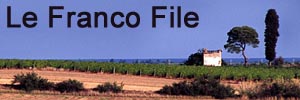We’ve arrived in La Mancha, where Cervantes created Don Quixote’s adventures. There are several known episodes of the Don’s imagined chivalry but the most well known must be his tilting at windmills episode. Francine’s research had shown two main locations of collections of windmills, one at Consuegra and another at Campo de Criptana. The two towns are about 40kms apart. Hoping for the chance of morning and/or evening light, Francine decided to position us in between the two to make both reasonably accessible. We’d be staying at Alcázar de San Juan.
 Our route in from Cuenca took us very close to Campo de Criptana so we called in en route at ~15:00. Our route was a good one, avoiding the tangle of the town and dropping us straight on to the field of windmills on the northern edge of town. I must say, they were an immediately impressive sight and conditions were very favourable with a mixture of sun, blue sky and cloud.
Our route in from Cuenca took us very close to Campo de Criptana so we called in en route at ~15:00. Our route was a good one, avoiding the tangle of the town and dropping us straight on to the field of windmills on the northern edge of town. I must say, they were an immediately impressive sight and conditions were very favourable with a mixture of sun, blue sky and cloud.
We parked in an area not favoured by anyone else thinking we’d lucked out even more. Then we spotted the busier parking area right on top of the windmills. In this now tourist-ridden world armed with all manner of digital photographic equipment, we wandered around the collection of 10 restored windmills, looking for appealing line-ups sans Joe Public armed with his selfie sticks, mobile phones, iPads, proper cameras and … wait for it …a swarm of 12 or so Italian motorcycles turned up whereupon one rider launched one of those accursed drone contraptions. For Darwin’s sake! Touring on a motorcycle with a drone in the side panniers? Maybe changes of clothing were seen as superfluous. It’s a good step from Italy to the middle of Spain.
 We spent an enjoyable hour or so, drones aside, wandering in the sun and snapping various combinations of windmills, before threading our way through the town of Campo de Criptana towards our hotel at Alcázar de San Juan. One of the Italian motorcyclists, now also back on the road, had threaded his way into a Spanish couple’s car and was engaged in slightly animated discussions surrounded by broken red glass from the car’s rear light. That would’ve been interesting to overhear.
We spent an enjoyable hour or so, drones aside, wandering in the sun and snapping various combinations of windmills, before threading our way through the town of Campo de Criptana towards our hotel at Alcázar de San Juan. One of the Italian motorcyclists, now also back on the road, had threaded his way into a Spanish couple’s car and was engaged in slightly animated discussions surrounded by broken red glass from the car’s rear light. That would’ve been interesting to overhear.
![]() Francine had spotted a hill with a further four windmills. As we neared our destination, these proved to be a mere 2kms from our target. That’d make a good evening spot and, not being one of the main collections, would surely be quieter. We checked in, discovered that dinner at the hotel was cheap and served between 20:00 and 23:00 (mas o menos) [more or less] and went for an evening shoot.
Francine had spotted a hill with a further four windmills. As we neared our destination, these proved to be a mere 2kms from our target. That’d make a good evening spot and, not being one of the main collections, would surely be quieter. We checked in, discovered that dinner at the hotel was cheap and served between 20:00 and 23:00 (mas o menos) [more or less] and went for an evening shoot.
 Atop the hill it was blowing a gale. Francine put her tripod down, legs splayed but not extended, and it blew over. Furthermore, locals were up there picnicking and engaged in trysts inside cars. Cyclists kept popping up on the road over the hill; runners jogged around the windmills dressed in fluorescent clothing. At least there were no drones – in that wind, they’d have ended up back in Cuenca. There wasn’t any light to speak of, either, there being a collar of murk along the western horizon into which the sun had descended. We did take a couple of handheld shots to see what could be made of them in post-processing, though. Francine discovered something called direct positive that at least stuffed some blue into an otherwise bland sky. Useful.
Atop the hill it was blowing a gale. Francine put her tripod down, legs splayed but not extended, and it blew over. Furthermore, locals were up there picnicking and engaged in trysts inside cars. Cyclists kept popping up on the road over the hill; runners jogged around the windmills dressed in fluorescent clothing. At least there were no drones – in that wind, they’d have ended up back in Cuenca. There wasn’t any light to speak of, either, there being a collar of murk along the western horizon into which the sun had descended. We did take a couple of handheld shots to see what could be made of them in post-processing, though. Francine discovered something called direct positive that at least stuffed some blue into an otherwise bland sky. Useful.
We enjoyed a basic three course meal with coffee and wine for the princely sum of 9.50€ each.
































Recent Comments